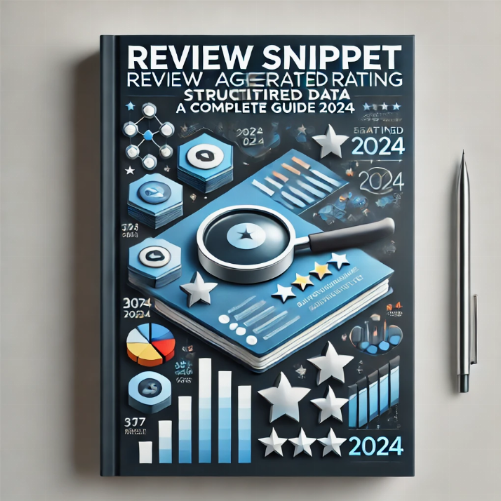Review Snippet (Review, AggregateRating) Structured Data: A Complete Guide 2024
Review Snippet (Review, AggregateRating) structured data is a standardized format for providing information about reviews and aggregate ratings for products, services, or local businesses. Implementing this structured data on your web pages can improve the appearance of your review snippets in Google search results, making them more informative and eye-catching. This can lead to an increase in click-through rate (CTR) and traffic to your website.
In this article, we'll provide a comprehensive guide on how to implement Review Snippet (Review, AggregateRating) structured data in 2024. We'll cover the following topics:
- What is Review Snippet (Review, AggregateRating) structured data?
- Why use Review Snippet (Review, AggregateRating) structured data?
- How to implement Review Snippet (Review, AggregateRating) structured data?
- Examples of Review Snippet (Review, AggregateRating) structured data implementation
- Tools and resources for implementing Review Snippet (Review, AggregateRating) structured data
- Tips for improving your review snippets
What is Review Snippet (Review, AggregateRating) structured data?
Review Snippet (Review, AggregateRating) structured data is a type of schema.org markup that provides detailed information about reviews and ratings. This data is used by Google and other search engines to better understand the content of your web pages and display richer, more informative review snippets in search results.
Review Snippet (Review, AggregateRating) structured data can include the following information:
- Overall rating: The average rating of a product, service, or local business, calculated based on individual reviews.
- Number of reviews: The total number of reviews that have been submitted for a product, service, or local business.
- Review author: The name of the author of an individual review.
- Review date: The date an individual review was submitted.
- Individual rating: The rating given by a single author to a product, service, or local business.
- Review text: The full text of an individual review.
Why use Review Snippet (Review, AggregateRating) structured data?
There are several reasons to use Review Snippet (Review, AggregateRating) structured data:
- Improve CTR: Richer, more informative review snippets can increase the CTR of your web pages in search results. This is because potential customers can quickly see the ratings and reviews from other users before clicking on your website.
- Increase trust: Review Snippet (Review, AggregateRating) structured data can increase trust in your products, services, or local businesses. This is because potential customers can see that other users have had positive experiences with your company.
- Enhance SEO ranking: Google has stated that structured data can be used as a ranking factor in search results. This means that implementing Review Snippet (Review, AggregateRating) structured data could potentially help you improve your website's ranking in search results.
How to implement Review Snippet (Review, AggregateRating) structured data?
There are several ways to implement Review Snippet (Review, AggregateRating) structured data:
- Microdata: Microdata is an HTML5 markup format that can be used to embed structured data within your web pages.
- JSON-LD: JSON-LD is a JavaScript markup format that can be used to embed structured data within your web pages.
- RDFa: RDFa is an HTML markup format that can be used to embed structured data within your web pages.
Google recommends using the JSON-LD format for implementing Review Snippet (Review, AggregateRating) structured data. This is because JSON-LD is a more readable and easier-to-maintain format compared to Microdata and RDFa.
To implement Review Snippet (Review, AggregateRating) structured data using JSON-LD, you'll need to follow these steps: 1. Generate the JSON-LD code for your reviews and ratings. There are several online tools and resources available that can help you generate the code, such as https://developers.google.com/search/docs/appearance/structured-data. 2. Place the generated JSON-LD code within the
section of your web page.
